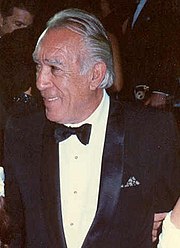Design
Design
Personality
Chart Properties
Your Cross represents the specific theme of your life. This cross embodies your unique potential & the lessons you're here to learn, providing a roadmap to fulfilling your life purpose.
We use the UTC birth time and date to do the calculations required to generate your Human Design chart.
Buy Tokens
Pay as you use, no expiry and no subscription required.Prompt Ideas
Get inspired with some epic prompt ideas.Clifford Odets's Biography
American playwright, screenwriter, actor, director and artist. A leading U.S. playwright in the ’30s, his works are marked by a strong social conscience which grew out of the Great Depression. His most notable novels include “Waiting for Lefty,” 1935, “Awake and Sing,” 1935 and “Golden Boy,” 1937.
Odets grew up in the Bronx, New York and left high school to become an actor. Turning his attention to play writing, at age 25 he became a member of The Group Theatre in New York where his searing dramas earned him the reputation as the most gifted of the American social-protest dramatists of the ’30s. While he is best known for the play “Awake and Sing,” his first full-length drama about struggles and eventual rebellion of a financially destitute Jewish family, “The Golden Boy,” 1937, after receiving critical and popular acclaim, ran for 250 performances.
After his success with the Broadway production of “Clash By Night” in 1942, radical writer Odets succumbed to the lure of Hollywood the following year and tried his hand at screenwriting. In 1944, he wrote “None But The Lonely Heart” and directed the film with Cary Grant in the starring role. Reluctant to adapt his social mores to more “acceptable standards,” living and working in tinsel-town often lacked lustre for the displaced playwright. “I took my filthy salary every week and rolled an inner eye and an inner landscape.” His alleged Marxist views led him to be under investigation by the HUAC (House of Un-American Activities Committee) in the early ’50s. In a nod to McCarthyism, Odets’ later work, “The Flowering Peach,” “The Country Girl,” 1955 and “The Big Knife,” 1955, put more focus on the trials of the individual than of the masses.
To combat insomnia and writer’s block, the multi-talented Odets painted hundreds of miniature paintings on paper and was once said to have painted 150 watercolors in as many days. He was an obsessive collector of modern art, including works by Matisse, Modiligiani and especially Paul Klee.
Odets first married two-time Academy Award winning actress and MGM star Luise Rainer in January 1937. They divorced in May 1940. He married for a second time, in 1943, to actress Bette Grayson. They had two children before divorcing in 1951. He died of cancer on 14 August 1963, aged 57, in Los Angeles, California.
Link to Wikipedia biography
Your Cross represents the specific theme of your life. This cross embodies your unique potential & the lessons you're here to learn, providing a roadmap to fulfilling your life purpose.
We use the UTC birth time and date to do the calculations required to generate your Human Design chart.







